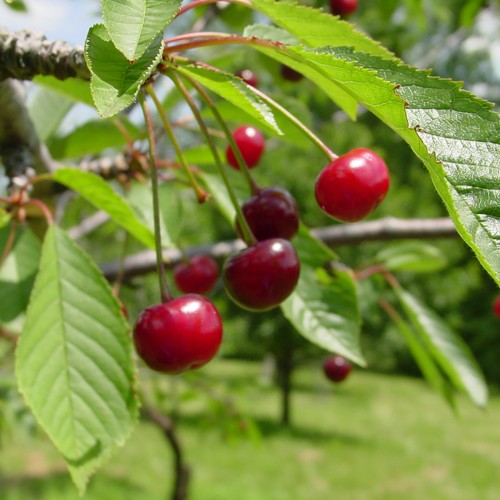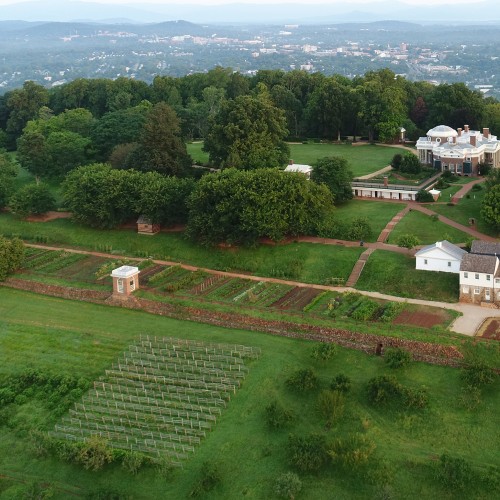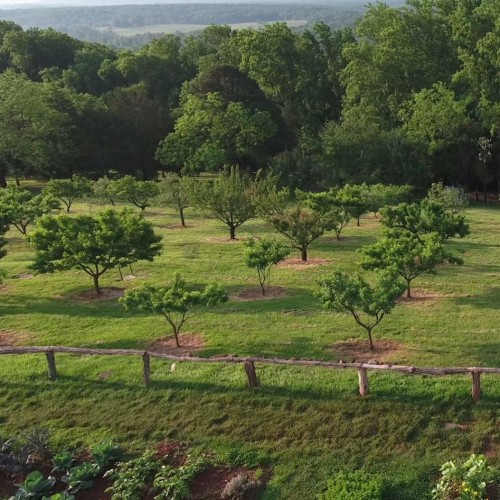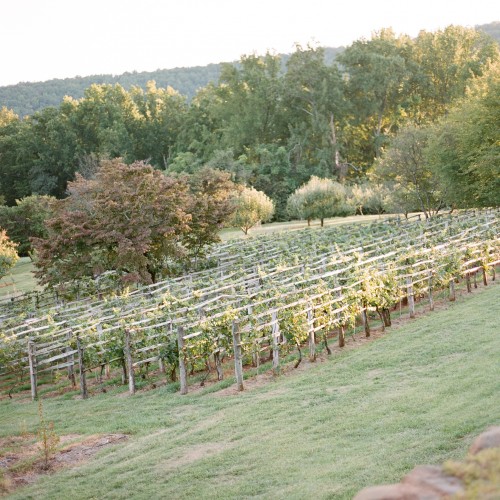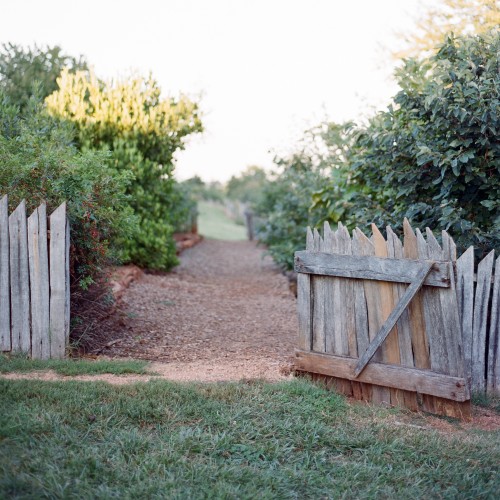Monticello's eight-acre fruit garden, or "Fruitery" as Jefferson called it, included the 400-tree South Orchard; two small vineyards (Northeast and Southwest); "berry squares" of currants, gooseberries, and raspberries; a nursery where Jefferson propagated fruit trees and special garden plants, and "submural beds" where figs and strawberries were grown to take advantage of the warming microclimate created by the stone wall.
The Site of The Fruit Gardens
The South Orchard
Apples at Monticello
Thomas Jefferson directed the planting of more than a dozen of varieties of apple trees at Monticello, both for eating out of hand and for making cider.
Peaches at Monticello
Jefferson described peaches as a "luxury" and had as many as 160 peach trees - planted at Monticello.
Cherries at Monticello
Cherries were the third most prominent fruit tree at Monticello.
The Vineyards
Other Fruit and Fruit Trees at Monticello
Jefferson cultivated a number of fruits and fruit trees at Monticello, from berries to pears to almonds.
The Nurseries and Fruit Propagation
Garden Podcasts
Check out our podcasts about Thomas Jefferson, Monticello, gardening, and the natural world, including our newest series, A Rich Spot of Earth.

